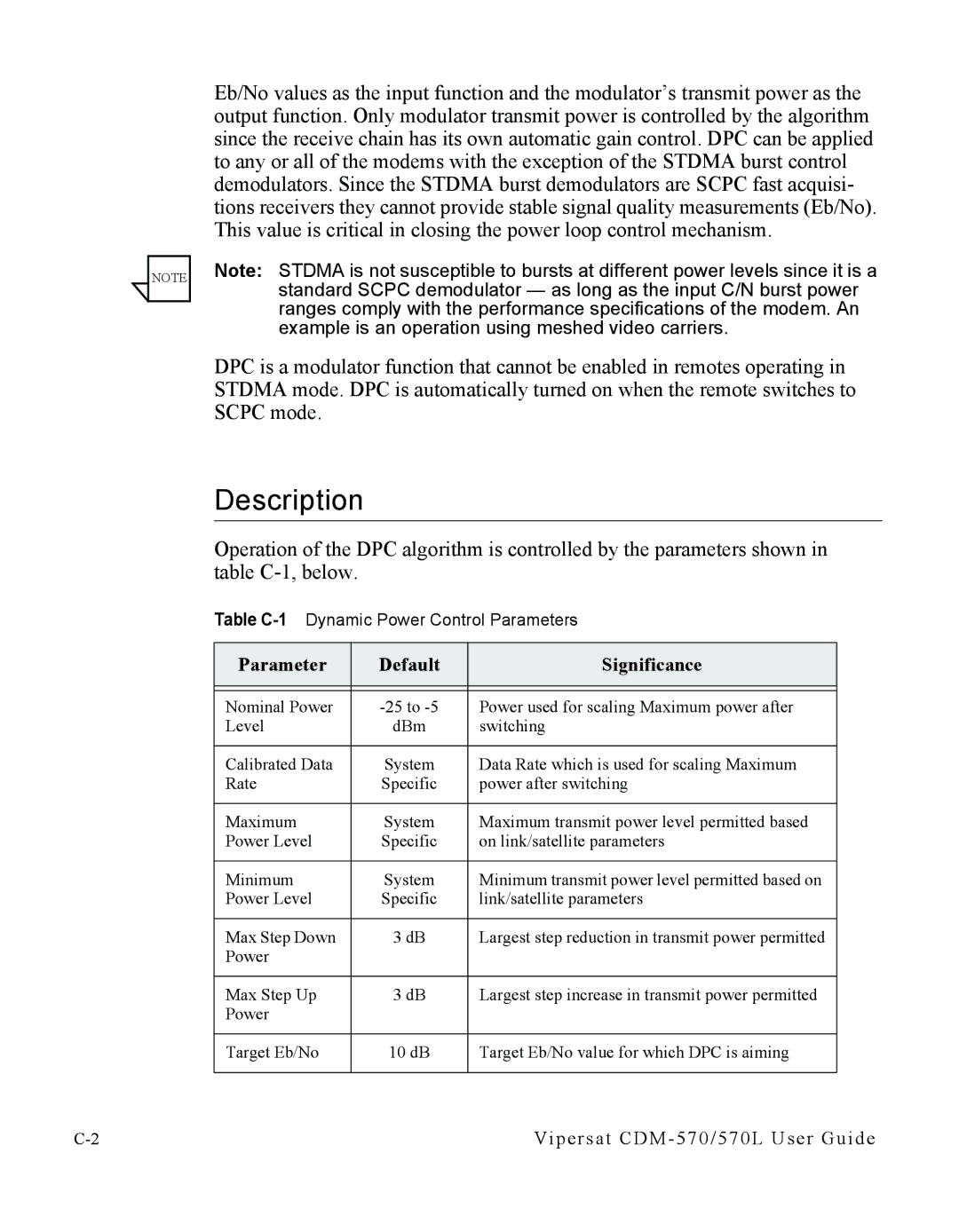
NOTE
Eb/No values as the input function and the modulator’s transmit power as the output function. Only modulator transmit power is controlled by the algorithm since the receive chain has its own automatic gain control. DPC can be applied to any or all of the modems with the exception of the STDMA burst control demodulators. Since the STDMA burst demodulators are SCPC fast acquisi- tions receivers they cannot provide stable signal quality measurements (Eb/No). This value is critical in closing the power loop control mechanism.
Note: STDMA is not susceptible to bursts at different power levels since it is a standard SCPC demodulator — as long as the input C/N burst power ranges comply with the performance specifications of the modem. An example is an operation using meshed video carriers.
DPC is a modulator function that cannot be enabled in remotes operating in STDMA mode. DPC is automatically turned on when the remote switches to SCPC mode.
Description
Operation of the DPC algorithm is controlled by the parameters shown in table
Table
Parameter | Default | Significance |
|
|
|
|
|
|
Nominal Power | Power used for scaling Maximum power after | |
Level | dBm | switching |
|
|
|
Calibrated Data | System | Data Rate which is used for scaling Maximum |
Rate | Specific | power after switching |
|
|
|
Maximum | System | Maximum transmit power level permitted based |
Power Level | Specific | on link/satellite parameters |
|
|
|
Minimum | System | Minimum transmit power level permitted based on |
Power Level | Specific | link/satellite parameters |
|
|
|
Max Step Down | 3 dB | Largest step reduction in transmit power permitted |
Power |
|
|
|
|
|
Max Step Up | 3 dB | Largest step increase in transmit power permitted |
Power |
|
|
|
|
|
Target Eb/No | 10 dB | Target Eb/No value for which DPC is aiming |
|
|
|
Vipersat |
